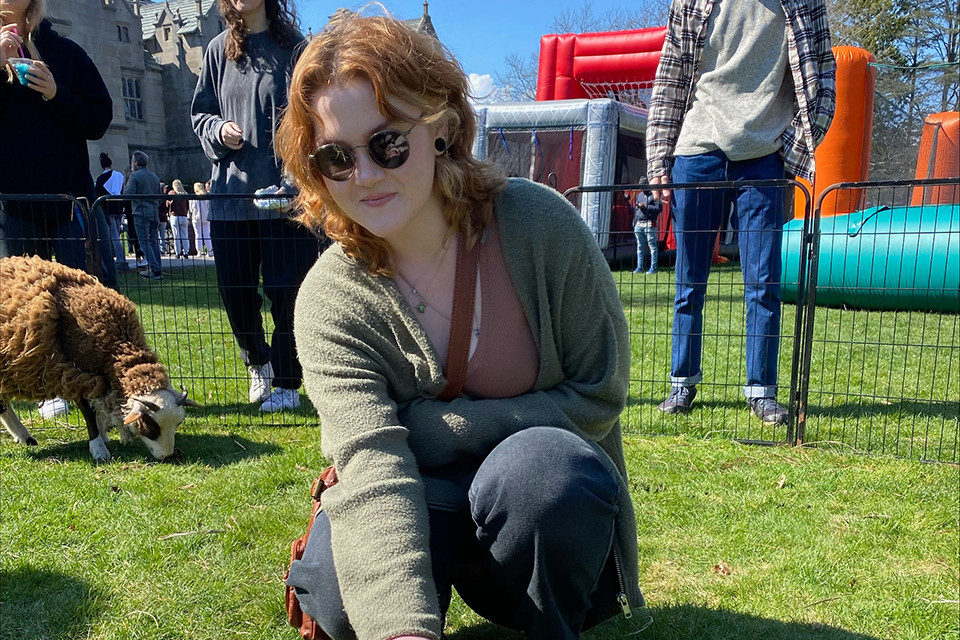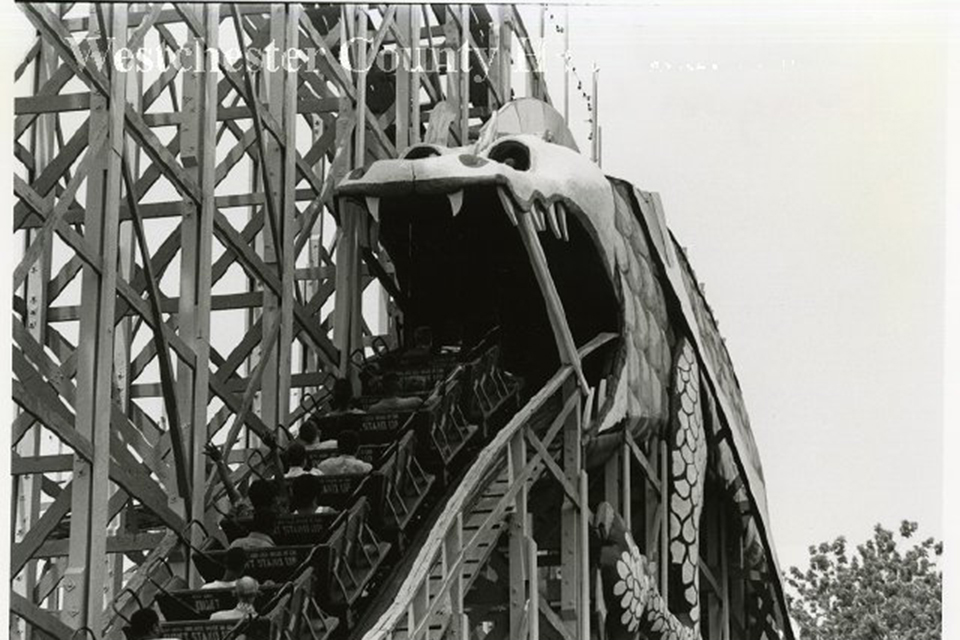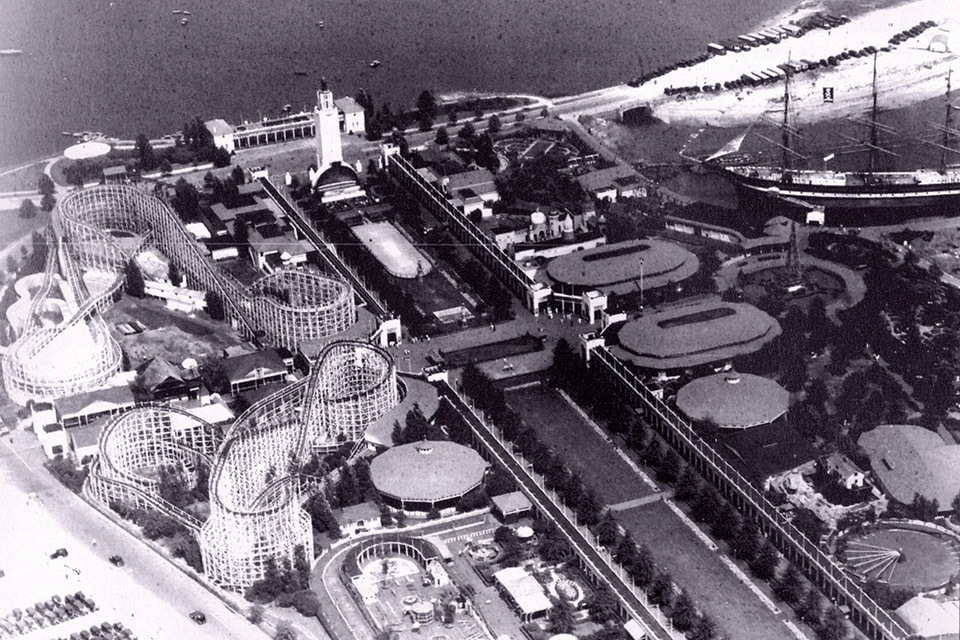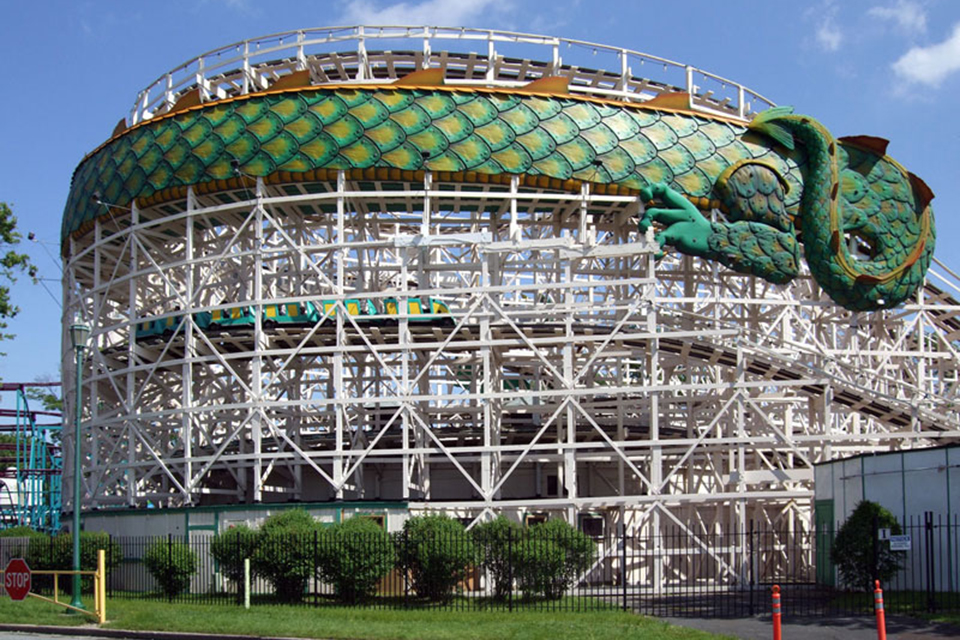Lily McConnell ’24 will present unique historical project at SRyou Student Exposition

The SRyou Student Exposition is just one week away, with a date of Wednesday, April 10, from 9:30 a.m. to 3:30 p.m.
In the interview below, Lily McConnell ’24, a double major in cultural historic preservation (CHP) and studio art with concentrations in painting and historic architecture, discusses the key details of her SRyou Student Exposition project that has taken her research to new heights — literally.
The SRyou Student Exposition is also still looking for volunteers to help during the day of the event. If anyone is interested, they can contact Natalie Cote, the SRyou Student Exposition planning committee chairwoman, at natalie.cote@salve.edu. Volunteers can be staff, faculty or students.
Q&A with Lily McConnell ’24
Q: Tell SALVEtoday about your SRyou Student Exposition project.
A: I am researching the Dragon Coaster in Rye, New York. I’m essentially writing a letter of recommendation to nominate it for the National Register of Historic Places (NHRP), because the coaster is currently unrecognized. Playland Park — an amusement park in Rye, New York, and where the ride is located — is recognized by the NHRP, but the coaster is not. The coaster is the main draw of the park, and it’s one of the oldest wooden roller coasters still functioning in the country. So I thought, ‘Since there are other roller coasters on the National Register, why not this one?’

Historic photo of the Dragon Coaster’s dragon head. Photo provided by the Westchester County Historical Society.
Q: What inspired you to undertake a project like this?
A: I knew I wanted to do something that brought me back to New York, where I’m from, and I didn’t want to research something that everyone had already researched before — like Coney Island or the Empire State Building. I also grew up going to Playland Park, and it was a place that I was always super excited to go to. I wanted to really understand its history, and being able to share with others the significance of the coaster was important to me.
Q: What are the key stages or milestones of the development of your project?
A: I think something that has been really helpful to me in the development of my project is the Rye Historical Society. They’ve been a huge help to me in finding old newspaper articles about the opening of the park and what people of antiquity thought of the opening of the park at that time. Being able to figure out how the people felt about it was really something that excited me when I started to discover its history. It’s the people in history rather than the objects that I really connect with — which is also one of my favorite things about the CHP program.
Q: Is there a specific person or story that you have uncovered through your research that was interesting to you?
A: Absolutely. There were three engineers who designed the coaster. It was Tom and Frank Prior, who were father and son, and Frederick Church. Frederick Church and Tom Prior started together in Chicago designing racing derby carousels, which are similar to a carousel, but they’re much faster. That’s how they started; but when Tom Prior died, Church married Tom Prior’s wife and essentially adopted his son, Frank Prior. So Church and Frank Prior started working together designing new roller coasters.
Q: Have you experienced any unexpected hurdles and how did you overcome them?
A: I think the biggest hurdle for me was trying to figure out who the engineers of the ride were. There’s a period in roller coaster history called the Golden Age, which is between the mid 1920s and the mid 1930s — and Church and the Prior’s were considered big names in the roller coaster industry. While they were big names, there wasn’t a ton of research on them — especially online. Which is where the Rye Historical Society was really helpful, because they had access to scanned physical documents that aren’t available to the public. The research was a lot of work, but it has been so much fun and worth it to be able to share this history with others.

Historic aerial view of Playland Park. Photo provided by the Westchester County Historical Society.
Q: In what ways do you feel your project makes a meaningful contribution or impact to the field?
A: I feel like amusement parks are an overlooked part of culture, especially American culture. People think of these places as just somewhere one can go on vacation with their family, but they’re a big part of America and people don’t really think about them in that capacity. For example, think of places like Disney World and Coney Island — they’re examples of core cultural spots in the United States that people don’t even really think about having so much history. They speak to a time in history in which people were really struggling but still looked for a place in which they could find refuge. There’s really important history there that speaks to the people of its time.
Q: How has working on a project like this contributed to your personal and academic growth?
A: I’ve done a ton of research papers in my past, but never to this extent. So, really diving into this project and dedicating myself to researching the history so deeply is something that I have never done before, and I think it has been extremely helpful in both my personal and academic growth. I think in my future especially, when I go on to graduate school, knowing how to properly conduct research is a really important skill that this project has taught me – I’ve become a better researcher.
Q: How has Salve prepared you, in both its coursework and your experience here, to conduct a large project like this and present it to the Salve community?
A: Salve has a really good way of making people feel comfortable, especially within the CHP program and in the Department of Art and Art History. I’m really proud of those two departments for creating an environment where myself and other students are comfortable and excited to speak about the things we’re interested in.
Q: If you could offer one piece of advice to a student who’s on the fence about participating in SRyou Student Exposition, what advice would you give them?
A: If you have something that you’re interested in and you want to talk about, don’t be afraid to. If you’re excited about it, someone else is going to be excited about it, too. It’s important to speak passionately about the things you’re passionate about — and to help other people learn about the things that they might also be passionate about and just not know it yet.

The Dragon Coaster today. Photo provided by Westchester Magazine.

